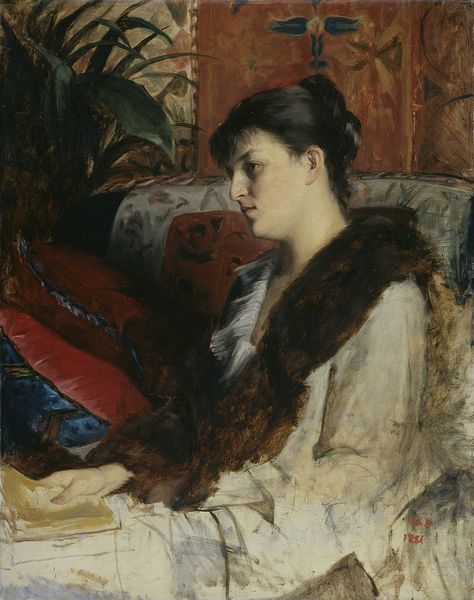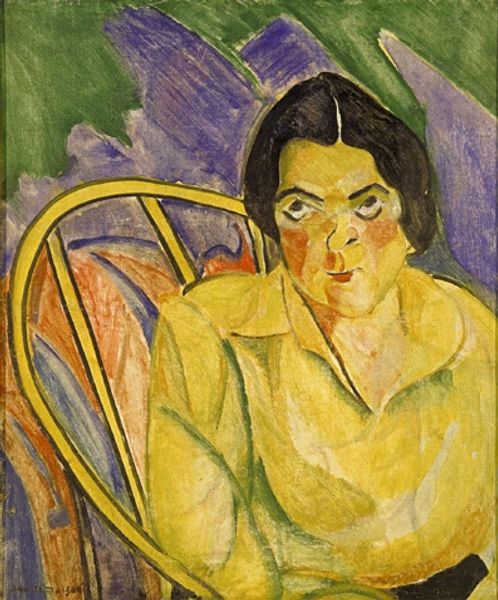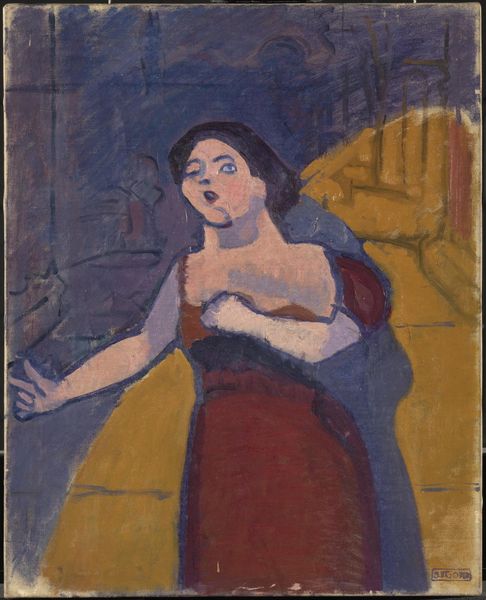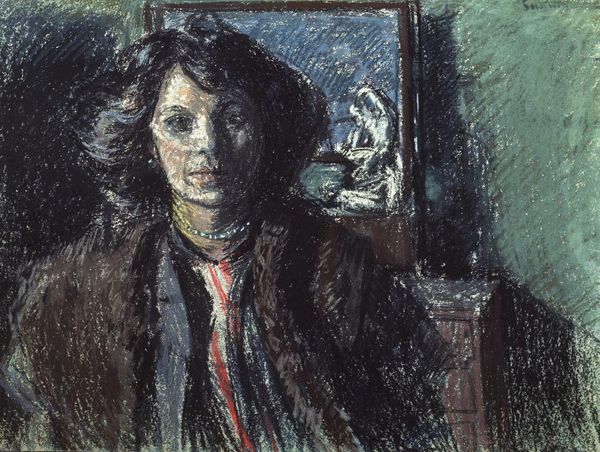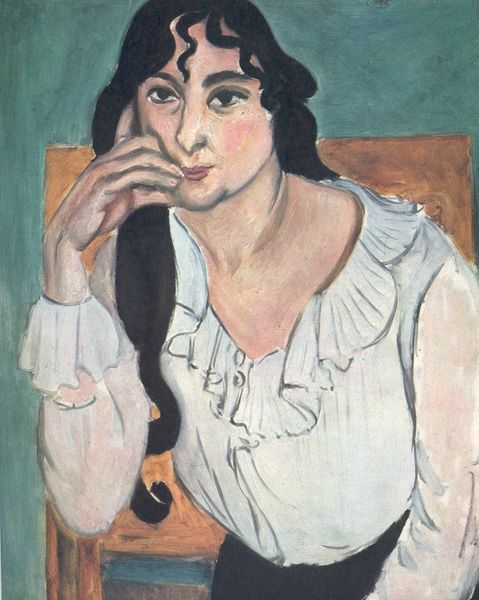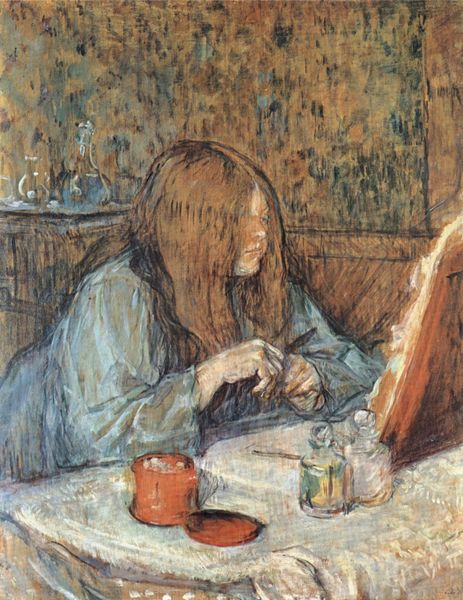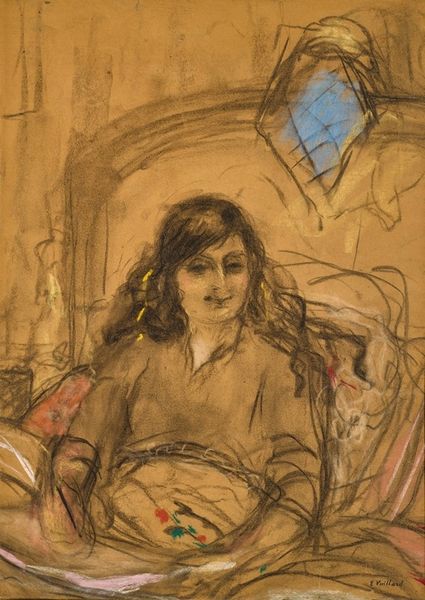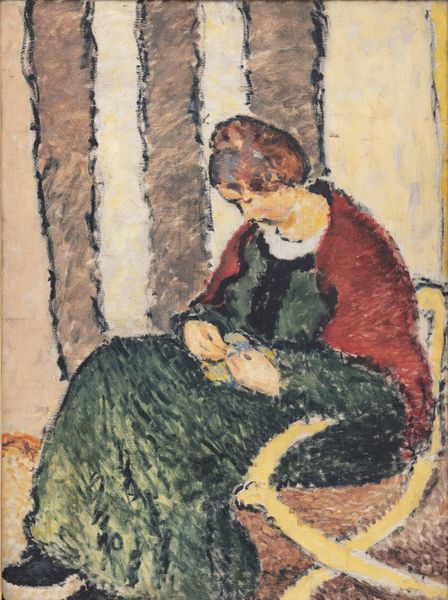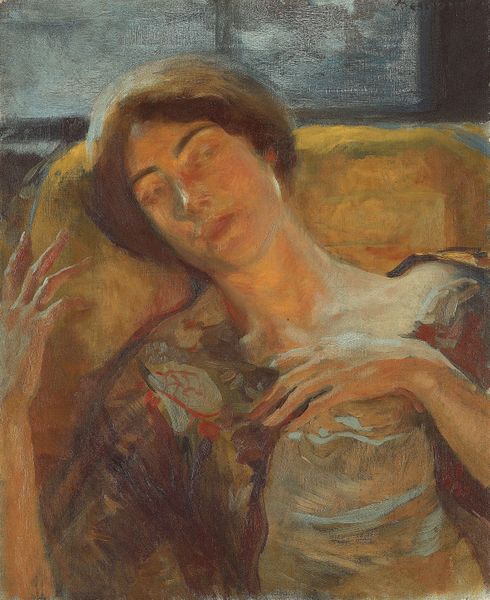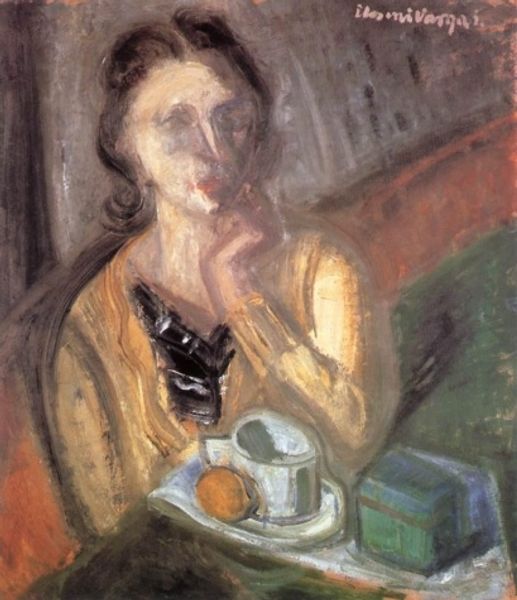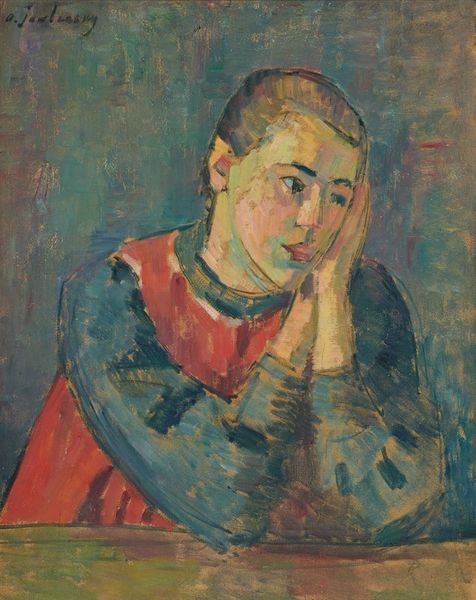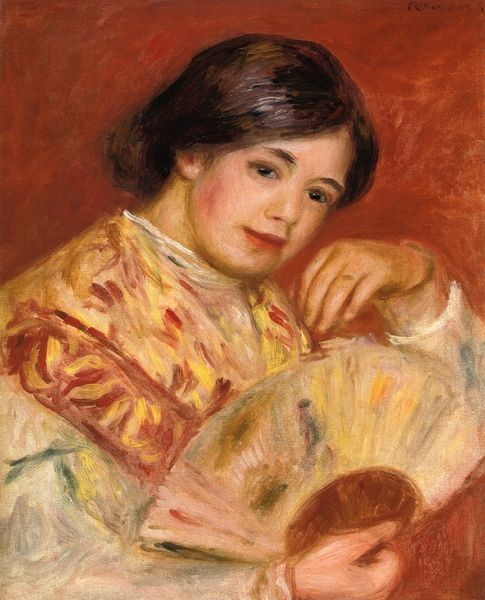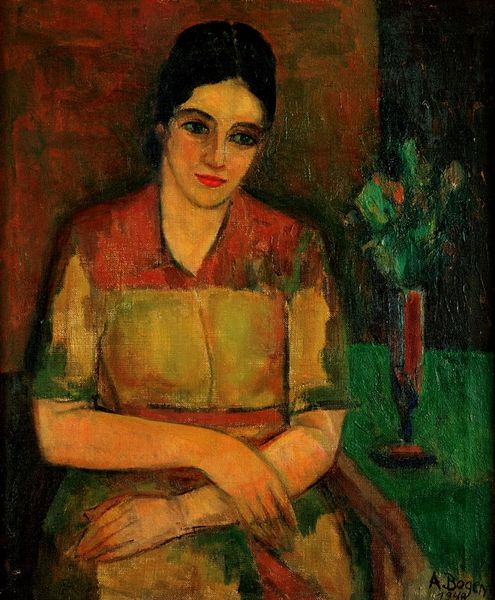
oil-paint
#
portrait
#
impressionism
#
oil-paint
#
oil painting
#
orientalism
#
genre-painting
#
expressionist
Copyright: Public domain
Editor: We're looking at "Hydrangeas" by Fujishima Takeji, an oil painting. The textures seem very heavy and the scene has an intimate, domestic feel. There's a pensive woman, a vase of hydrangeas of course, a table with what seems to be a closed book… How do you interpret this work within its time? Curator: The work presents a fascinating glimpse into the negotiation of cultural identity in early 20th-century Japan. Fujishima Takeji was deeply influenced by European impressionism and orientalism, but what's particularly compelling is how he uses those imported styles to portray a Japanese subject. What’s her pose, and how does it play into the larger sociopolitical moment? Editor: She looks lost in thought, maybe even a bit melancholy. There's a sense of quiet introspection. Could that suggest a commentary on the changing role of women, or perhaps a tension between tradition and modernity? Curator: Precisely! Consider the Meiji era and its aftermath. Japan was rapidly modernizing, embracing Western ideals, but at what cost to its own cultural heritage? A quiet moment like this can be charged with the push and pull of societal expectations. Look how orientalism, which has often depicted Asian women through a western lens, is almost reversed by the artist himself depicting someone familiar. And does that maybe also show the rise of a strong cultural identity of the japanese people? Editor: So the "impressionistic" style, then, is almost a tool to examine Japanese identity? That makes sense. Curator: It becomes a lens, not just for depicting what's seen, but for questioning who is seeing and what they're looking for. It's a subtle subversion, and perhaps an attempt to find a new visual language rooted in a rapidly shifting social landscape. It invites questions about how Japanese art fits into the global conversation. Editor: This makes me look at it from a totally different perspective. Curator: That's the joy of art history – it prompts us to constantly re-evaluate the dialogue between art, culture, and society.
Comments
No comments
Be the first to comment and join the conversation on the ultimate creative platform.

